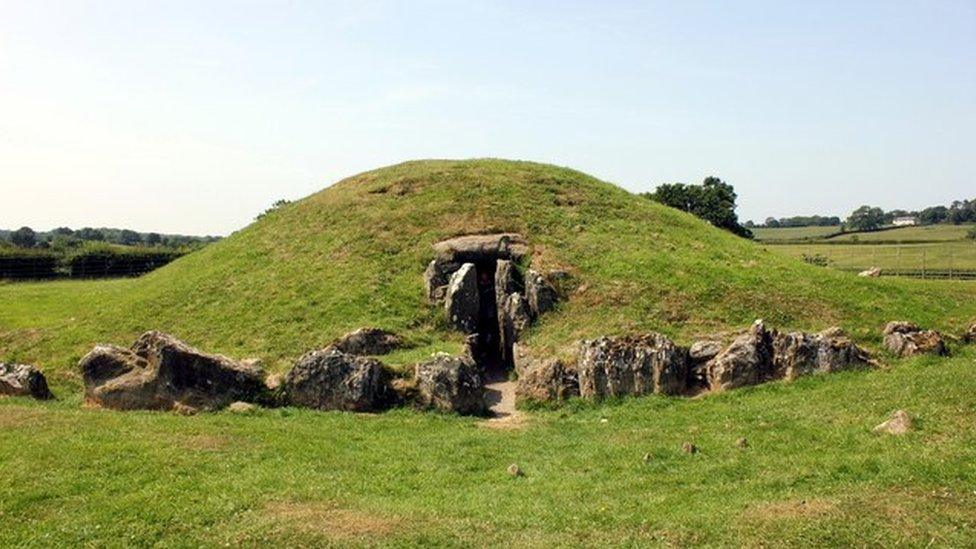Anglesey's Bryn Celli Ddu tomb 'surrounded by cairns'
- Published

The burial mound on Anglesey was built to catch the rising sun on the summer solstice
A series of late Neolithic and early Bronze Age cairns have been uncovered at Anglesey's 5,000-year-old tomb.
Bryn Celli Ddu is famous for being aligned to the midsummer sunrise, external - when a beam of sunlight illuminates the chamber on the longest day of the year.
But a new study has discovered the original monument is bigger than previously thought.
Researchers described the find as "very exciting" as it was "something we never suspected before".
It follows archaeological excavation carried out by Cadw and researchers from Manchester Metropolitan University and the University of Central Lancashire.
The series of cairns - a mound of rough stones built as a memorial or landmark - have been discovered along a ridge behind Bryn Celli Ddu.
Dr Ben Edwards, senior lecturer in archaeology and heritage from Manchester Metropolitan University, said: "The geophysical survey, combined with innovative digital modelling, has raised the possibility of a cairn cemetery surrounding the original monument, something we never suspected before.
"Rather than Bryn Celli Ddu standing on its own, we're suddenly filling the landscape with rock art, ritual pots and burial chambers."
Dr Ffion Reynolds, from Cadw, said: "Since we started the project we have discovered that Bryn Celli Ddu was never in isolation, there was activity happening all around."
"We knew this would be a good project but it's turning out to be very exciting."
- Published13 January 2014